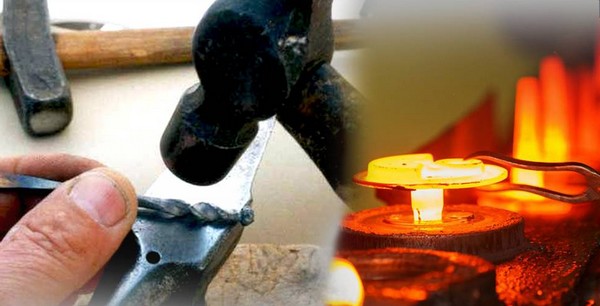What is cold forging and hot forging?
The shaping of certain things requires a specialized process. With the help of customized processes and techniques, one can shape the metals to better strength. Certain well-defined methods are incorporated using specified tools to shape the metal and give it required shape. This method of shaping the metals in the desired shape is called forging.

What is forging?
Forging is the manufacturing process; that is done to give shape to the metals via hammering, pressing, and rolling. These comprehensive forces are delivered with a hammer or die. The mechanism of forging is categorized in sync with the temperature at which it is performed i.e. cold, warm, or hot forging. With the help of this method, a wide range of metals can be forged. Forged steel is stronger and reliable than the casting one.
Forging is always regarded as one step ahead of machining. Forged aluminum is ideal for applications where performance and safety are vital but a lighter-weight metal is required for speed and efficiency. It is known to be better than machining because the forging process provides a higher level of structural integrity than any other metalworking process. The method does away with structural voids; which has the tendency to weaken the parts. It also provides the level of uniformity to help maximize part performance. Machining paves way for exposing of the grain ends; thereby making the parts more susceptible to weakening and cracking.
What is cold forging?
Cold forging is the manufacturing process; where a bar stock is inserted into a die and squeezed with a second closed die. Cold forging supplier deforms the metal; while it is below its re-crystallization point. It is generally preferred for soft metals like aluminum, etc. This process is less expensive as compared to the hot forging one and the end product requires little finishing work.
Benefits of cold forging
Cold forging manufacturing process occurs at or near room temperature. The most common methods used in this application are standard or carbon alloy steels. Also, this forging is less susceptible to issues of contamination. It also has added benefits like:
- easier to impart directional properties
- improved interchangeability and reproducibility,
- increased dimensional control,
- Able to handle high stress and high die loads
- Produces net shape or near-net shape parts
What is hot forging?
Hot forging is the method of shaping metal at a temperature and strain rate; such that recrystallization occurs simultaneously with deformation; thereby avoiding strain hardening. This process entails heating up of workpiece to about 75% of its melting temperature. The mechanism helps in making the metal easier to shape as well as less likely to fracture e.g. iron along with its alloys are mostly hot forged part manufacturer.
Benefits of hot forging
Because the hot forging manufacturing process is done at high temperatures; there is the highest possible level of material deformation and access to complex 3D geometries. The materials that are hot forged to shape possess increased ductility; which makes them desirable for many configurations. Also, this type of forging is recommended for the deformation of metal; which features a high formability ratio. The process has the following benefits:
- Increased ductility
- Highest possible level of material deformation
- Homogenized grain structure
- Efficient process, when working harder with metals like steel
Leading forged parts suppliers offer an extensive range of quality and cost-effective forged components. The suppliers continue to invest in state of the art facilities harboring top-class capabilities.
